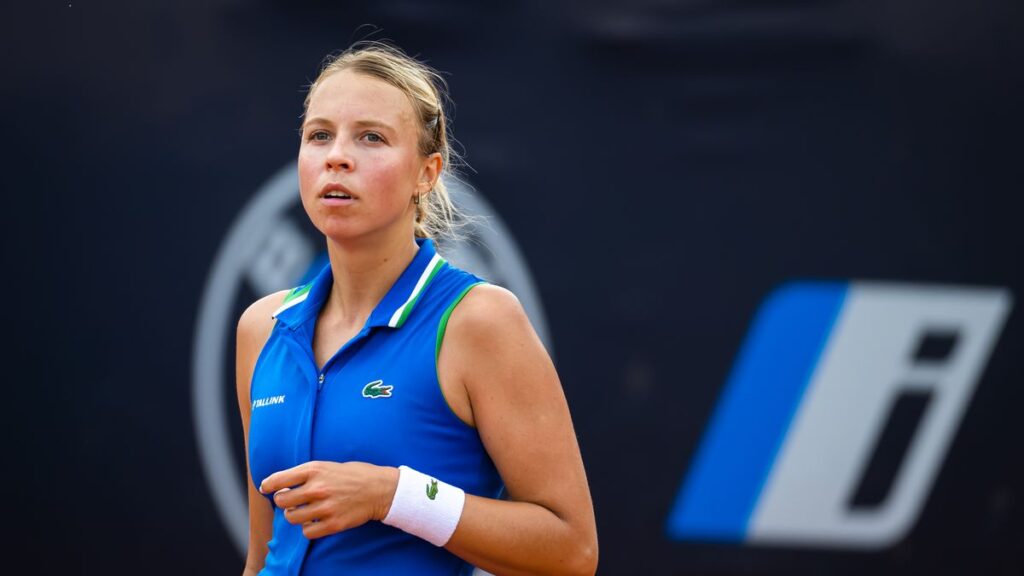First appeared in BOXSCORE
By Aron Solomon
On Tuesday morning, the tennis world learned that one of the most beloved WTA players is hanging up her racquet right after Wimbledon:

This is a huge loss for tennis on many levels. Kontaveit not only rose a little over a year ago to world number 2, she is a player through whom we see not only the human frailties of professional athletes (because of how wonderfully open she is on social media) but how absolutely brutal a sport tennis can be. She is also a truly amazing person – the pride of Estonia.
I have argued for years that how professional tennis is structured grinds players down to their physical and emotional core. For Kontaveit to retire at 27 is far more of a feature of WTA tennis than a bug; the calendar year schedule is designed to break players.
Let’s just take a quick dive into the facts:
As I’ve spoken and written about at length over the years, when we compare tennis and other major team sports, we see how tennis is unlike every other professional sport.
The WTA begins official play in early January, and there are tournaments every week until well into November. This means, especially for the top players who might qualify for the WTA finals
Top players may participate in up to 30 (or even more) tournaments per year, with each tournament usually involving multiple matches. In contrast, the NFL, NBA, NHL, and MLB have a fixed number of games in their regular seasons, with teams playing in a far shorter season (the NFL plays five months of the year), depending on the sport.
Most importantly, how injuries and a return to play is treated in other professional sports is night and day as compared to tennis. As New Jersey lawyer, Daryl Zaslow – who is also the parent of a Division 1 college tennis player who aspires to play WTA tennis – observes:
“It is heartbreaking to know how hard these elite tennis players work at their craft, how much they have sacrificed, and knowing that they frequently have a network of family that are counting on them only to see the heartache when they have to give it all up due to injury. It is at such moments that they will need their family and friends the most.”
And as Daria Saville pointed out this weekend after her first match in close to a year due to a very serious injury, surgery, and recovery, when tennis players return to the game, it’s at 100%. While a football or basketball player might slowly come back and play part of a game, Saville just played three sets in a winning a qualifying match one day this weekend and then played another three sets the next day and lost.
So how can this be fixed?
First, as The Guardian recently called them, these “mini-slams” (tournaments that are transitioning from one to two weeks) add completely unnecessary physical and emotional strain to athletes who don’t need it. The WTA needs to exert whatever pressure they can not to make this a trend (which I fear it has already become).
But that’s only a start. What ultimately needs to be fixed is the entire calendar. It’s not just that “tennis season” is over ten months per calendar year for the top pros, the travel makes absolutely no sense. Very much like Formula 1 (where there is only one race per every week or two during the season) there is no logical pattern as to where they compete.
Tennis travels all over the world in haphazard patterns. While the top tournaments on tour at least try (and often fail) to stay on the same continent for a few weeks at a time, players ranked outside the top 100 (especially with more of these ridiculous and unnecessary two-week tournaments) criss-cross countries and regions in search of points and money. It’s brutal on the body.
Until the right changes are made, we will hear of more amazing professional tennis players being worn down by life on tour. It’s unsustainable and has been like this for far too long. It needs to stop.
About Aron Solomon
A Pulitzer Prize-nominated writer, Aron Solomon, JD, is the Chief Legal Analyst for Esquire Digital and the Editor-in-Chief for Today’s Esquire. He has taught entrepreneurship at McGill University and the University of Pennsylvania, and was elected to Fastcase 50, recognizing the top 50 legal innovators in the world. Aron has been featured in Forbes, CBS News, CNBC, USA Today, ESPN, TechCrunch, The Hill, BuzzFeed, Fortune, Venture Beat, The Independent, Fortune China, Yahoo!, ABA Journal, Law.com, The Boston Globe, YouTube, NewsBreak, and many other leading publications.



